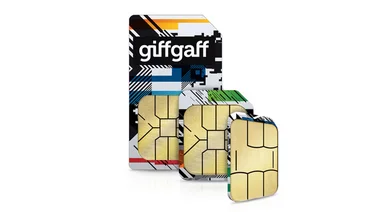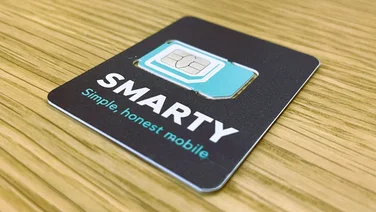Broadband & Mobile Networks

The best Black Friday broadband deals from our favourite providers
It's all red this Black Friday - Virgin Media and Vodafone lead the pack with great discounts on fibre broadband plans
-
 Get unlimited data for less with this Black Friday SIM deal Our favourite mobile network of 2025 is offering unlimited data for just £15/mth this Black Friday
Get unlimited data for less with this Black Friday SIM deal Our favourite mobile network of 2025 is offering unlimited data for just £15/mth this Black Friday -
 Three review: Satisfaction not guaranteed Speeds and coverage are improving, but Three needs to fix its service and support£11
Three review: Satisfaction not guaranteed Speeds and coverage are improving, but Three needs to fix its service and support£11 -
 Vodafone review: Strong bundles but not always brilliant value Despite further improvements on speeds, coverage and support, Vodafone is struggling to justify high prices£16
Vodafone review: Strong bundles but not always brilliant value Despite further improvements on speeds, coverage and support, Vodafone is struggling to justify high prices£16 -
 Expert Reviews Mobile Network Awards 2025: The results Expert Reviews reveals the UK’s top mobile networks, as chosen by you
Expert Reviews Mobile Network Awards 2025: The results Expert Reviews reveals the UK’s top mobile networks, as chosen by you -
recommended
 Sky Mobile review: Consistently strong With good scores in every category, Sky Mobile is a strong mobile network for just about anyone£5
Sky Mobile review: Consistently strong With good scores in every category, Sky Mobile is a strong mobile network for just about anyone£5 -
 EE review: Worth the premium? EE is strong on speed and reliability, but middling satisfaction and value scores reflect its high prices£18
EE review: Worth the premium? EE is strong on speed and reliability, but middling satisfaction and value scores reflect its high prices£18 -
recommended
 Tesco Mobile review: A supermarket own-brand bargain Speeds could still be better, but Tesco Mobile’s awards haul speaks volumes about its customer service and satisfaction£7.50
Tesco Mobile review: A supermarket own-brand bargain Speeds could still be better, but Tesco Mobile’s awards haul speaks volumes about its customer service and satisfaction£7.50 -
best buy
 Giffgaff review: Simply the best With low prices and fantastic service, Giffgaff is this year’s best mobile network£6
Giffgaff review: Simply the best With low prices and fantastic service, Giffgaff is this year’s best mobile network£6 -
 iD Mobile review: Slipping down the rankings iD Mobile still has some great value phone and SIM-only deals, but below-average customer service and satisfaction make it harder to recommend this year£6
iD Mobile review: Slipping down the rankings iD Mobile still has some great value phone and SIM-only deals, but below-average customer service and satisfaction make it harder to recommend this year£6 -
recommended
 Lebara review: Much-loved low-cost network with free calls abroad Our most recommended network, with great low-cost deals and bundled international calls£5
Lebara review: Much-loved low-cost network with free calls abroad Our most recommended network, with great low-cost deals and bundled international calls£5 -
 Smarty review: Short on features, high on value Award-winning value and impressive performance and reliability, but customer service needs improvement£6
Smarty review: Short on features, high on value Award-winning value and impressive performance and reliability, but customer service needs improvement£6 -
 O2 review: High prices, not so high performance Competitive deals and decent customer service, but O2 still needs to improve its coverage and performance.£15
O2 review: High prices, not so high performance Competitive deals and decent customer service, but O2 still needs to improve its coverage and performance.£15 -
 The best broadband providers, based on our annual survey Our buyer’s guide and customer survey will help you pick the right broadband provider for your home
The best broadband providers, based on our annual survey Our buyer’s guide and customer survey will help you pick the right broadband provider for your home